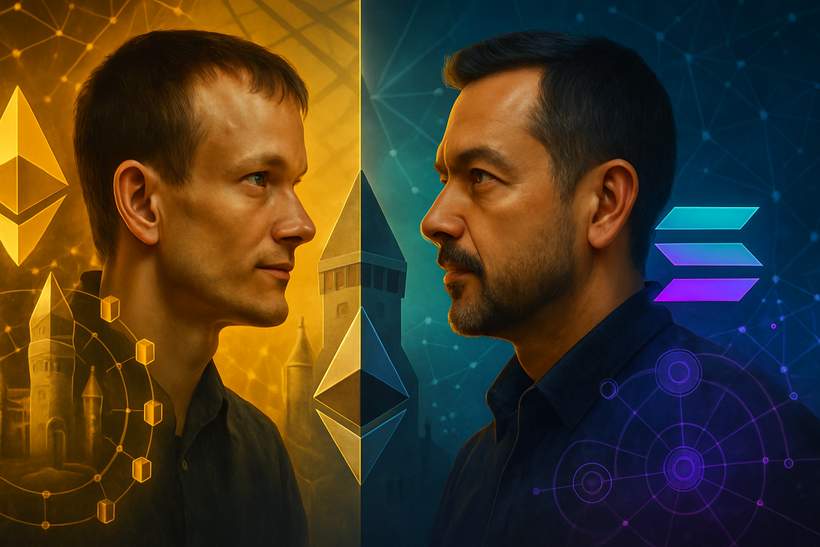The Quiet End of the Ethereum vs Solana Showdown

Introduction
So, the epic showdown between Ethereum and Solana didn’t end with a bang, but rather with a soft little whimper. Yep, just like an undercooked soufflé. In 2025, the battle of these crypto titans showcased how differently they’ve evolved—like two siblings taking completely different paths: one choosing a chaotic art career while the other opts for a steady, if a bit boring, desk job.
Architectural Differences
Ethereum decided to throw away the homework of monolithic chains ages ago. Now, it’s all about being the chill settlement layer while letting those jazzy L2 rollups handle the action. Think of it as Ethereum being the classy host at a party while the lively rollups are the guest performers stealing the show.
Meanwhile, Solana was like, “Nah, I’m going all in on the classic rock band vibe!” With one singular ledger, super-fast slot times, and a proof-of-history system, it’s the coolest kid on the block that just loves to jam all transactions into one global fiesta.
Transaction Speed and Efficiency
Both chains give us that sweet instant transaction vibe every time we click ‘send’, but the security measures are like day and night. It’s not just about speed; it’s about efficiency in real-world applications. Would you rather cook a meal quickly or do it right? That’s the daily dilemma for developers in 2026.
In Solana land, when everything runs smoothly, transactions zoom through confirmation like a caffeine-fueled cheetah—400 milliseconds to be exact! Talk about fast! Validators use a proof-of-history clock to keep things ticking along without the usual waiting period.
But Ethereum? Oh, it’s a bit of a rollercoaster. Transactions are processed off-chain by rollups, with blocks taking 250 milliseconds to 2 seconds. Finality isn’t instant; you’ll have to wait a bit longer for the magic to happen, especially with its 7-day withdrawal window for optimistic rollups. Who wants to wait that long?
Cost and Fee Structure
Now, let’s talk dollars and cents. On Solana, you can feel like a millionaire even if you’re just sending a few lamports (that’s their currency, folks). A signature costs a measly 0.0001 bucks. Need speed? Bid for priority inclusion when traffic surges! In retail transactions, you’re living under a penny! But it’s a bit of a mixed bag—when things break down, it can happen to everyone at once.
Ethereum’s fees, however, are all over the place, fluctuating with the market. Just when you think you’ve got it sorted, BAM! Prices are spiking—or at least, the blockchain equivalents thereof. When the network gets congested, the costs can eat away at your profits faster than a kid at a candy shop.
Handling Failures
Here’s where things get a little tricky. If Solana hiccups, everyone feels the aftershocks simultaneously, as demonstrated on that fateful February day when it paused for over four hours because of a loader bug. Ouch! On the flip side, if an L2 sequencer on Ethereum decides to take a coffee break, it’s only that specific rollup that takes a hit while L1 continues to do its thing.
In both networks, failure modes vary, but hey, optimism is key! With optimistic rollups backed by fault-proof systems, Ethereum’s handling of hiccups is a little more graceful—someone’s always got your back.
Future Prospects and Developments
Both blockchain ecosystems are on their roads to innovation. Ethereum has a roadmap stacked with upgrades meant to improve its game, while Solana’s making strides with its new Firedancer client, promising unparalleled throughput. If you thought things were fast before, just wait!
The ultimate question? It’s not just about who’s faster or cheaper; it’s about what plays nice with the apps you’re building. If you’re creating something that thrives on quick transactions, Solana’s all in. But if you prefer a robust infrastructure with steady reliability, then Ethereum’s modular design might just be your cup of tea.
Conclusion
In essence, whether you’re Team Solana or Team Ethereum, it’s clear that both have their unique flavors and approaches. Depending on your application, you’ll find one better than the other. And in the end, it’s all about fitting the right puzzle piece into your journey through this wild world of cryptocurrencies!